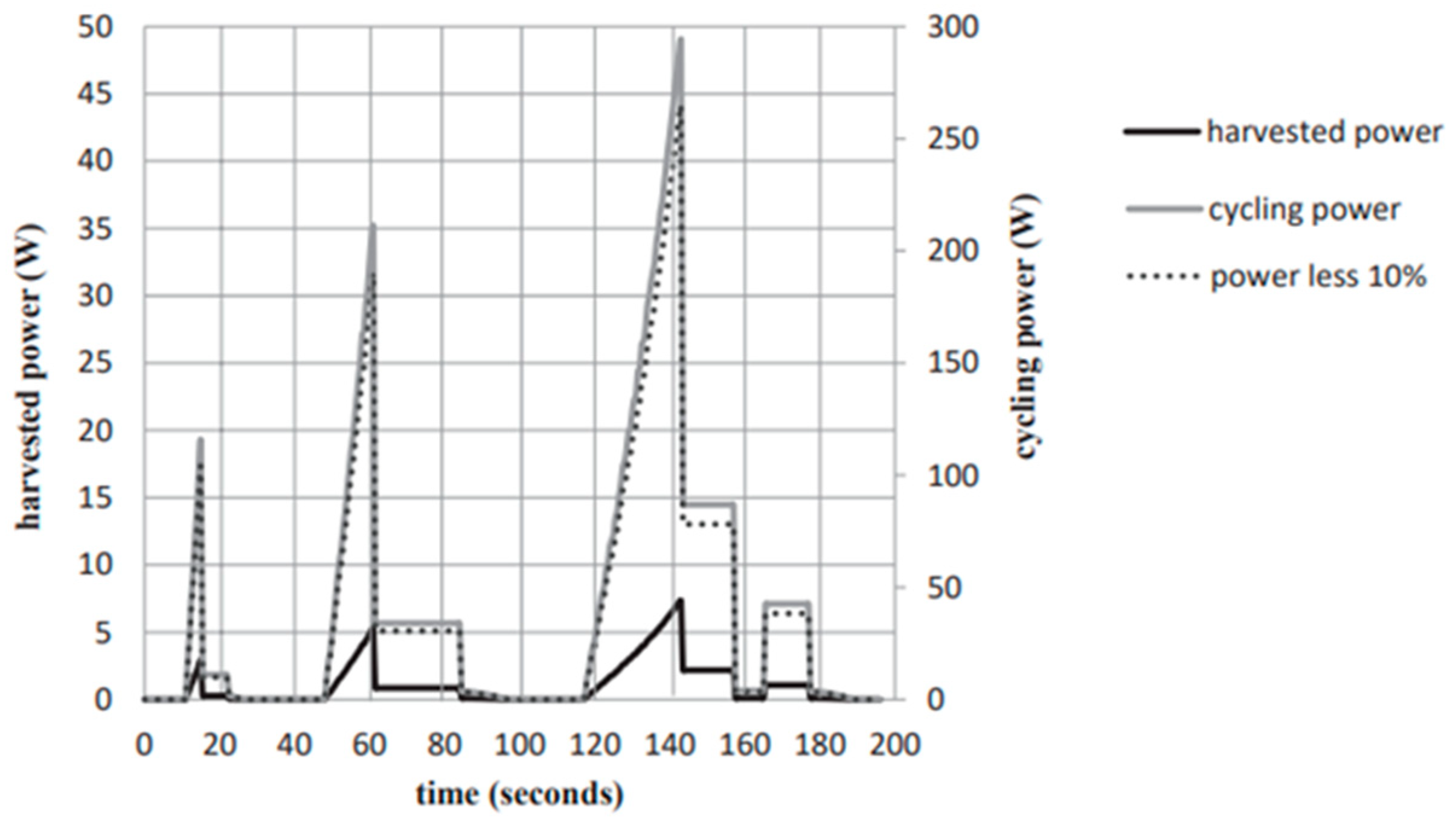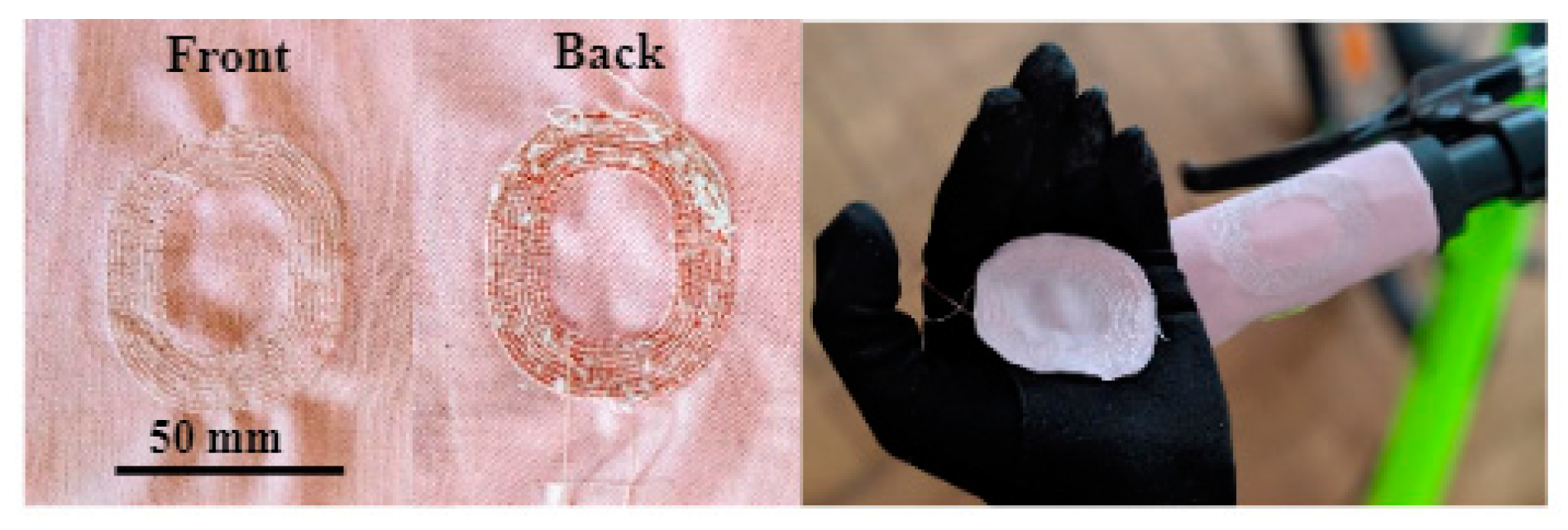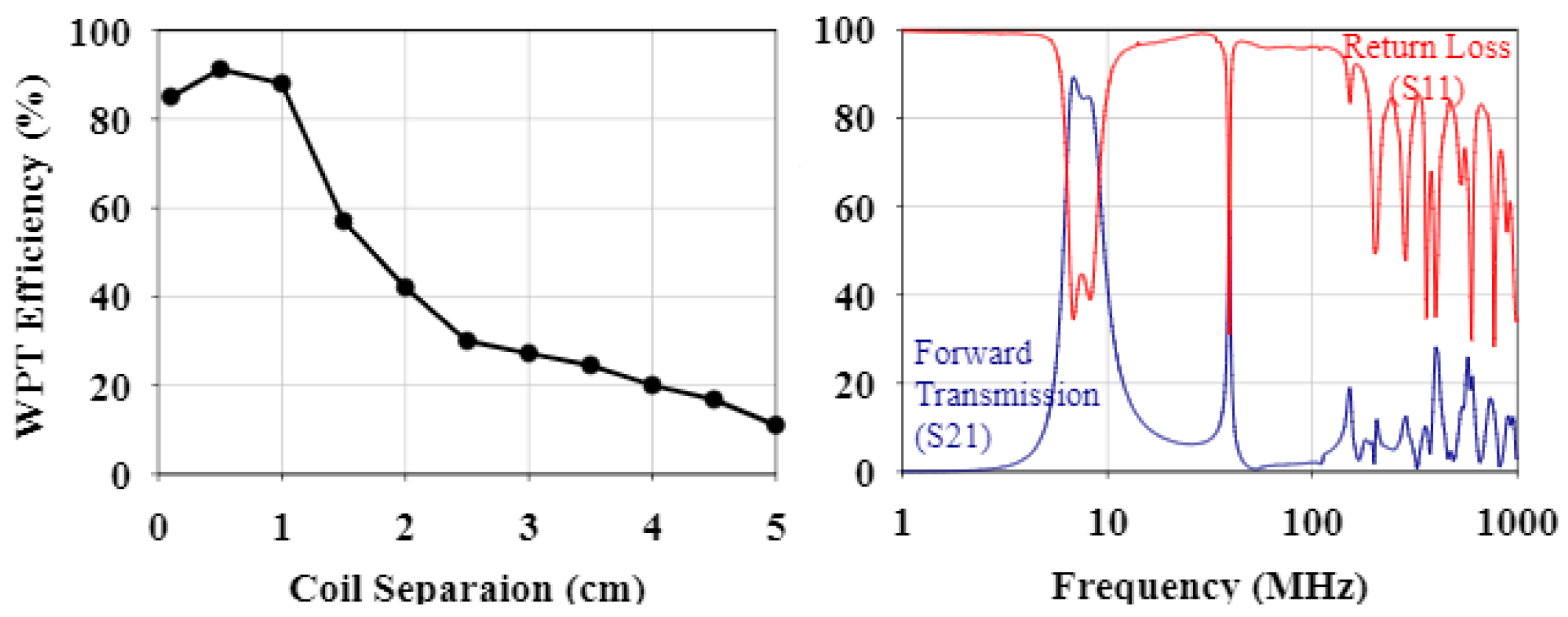A Smart Cycling Platform for Textile-Based Sensing and Wireless Power Transfer in Smart Cities †
Abstract
:1. Introduction
2. Energy Harvesting from Cycling
3. Wearable Wireless Power Transfer
4. Requirements for Wearable Sensing
5. Conclusions
Funding
Conflicts of Interest
References
- Karanikola, P.; Panagopoulos, T.; Tampakis, S.; Tsantopoulos, G. Cycling as a smart and green mode of transport in small touristic cities. Sustainability 2018, 10, 268. [Google Scholar] [CrossRef]
- Balsamo, D.; Merrett, G.V.; Zaghari, B.; Wei, Y.; Ramchurn, S.; Stein, S.; Beeby, S. Wearable and autonomous computing for future smart cities: Open challenges. In Proceedings of the 2017 25th International Conference on Software, Telecommunications and Computer Networks (SoftCOM), Split, Croatia, 21–23 September 2017; pp. 1–5. [Google Scholar]
- Lin, J.; Schofield, N.; Emadi, A. External-Rotor 6-10 Switched Reluctance Motor for an Electric Bicycle. IEEE Trans. Transp. Electrif. 2015, 1, 348–356. [Google Scholar] [CrossRef]
- Outram, C.R.; Biderman, C.A. The Copenhagen Wheel: An Innovative Electric Bicycle System that Harnesses the Power of Real-Time Information and Crowd Sourcing. 2010. Available online: http://senseable.mit.edu/papers/pdf/20100325_Outram_etal_CopenhagenWheel_EcologicVehicles.pdf (accessed on 3 December 2019).
- Kang, S.H.; Jung, C.W. Textile resonators with thin copper wire for wearable MR-WPT system. IEEE Microw. Wirel. Compon. Lett. 2016, 27, 91–93. [Google Scholar] [CrossRef]
- Bao, K.; Zekios, C.L.; Georgakopoulos, S.V. A Wearable WPT System on Flexible Substrates. IEEE Antennas Wirel. Propag. Lett. 2019, 18, 931–935. [Google Scholar] [CrossRef]
- Wagih, M.; Komolafe, A.; Zaghari, B. Position Independent Wearable 6.78 MHz Near-Field Radiative Wireless Power Transfer Using Electrically-Small Embroidered Textile Coils; PowerMEMS2019: Krakow, Poland, 2019. (in press) [Google Scholar]
- Komolafe, A.; Torah, R.; Wei, Y.; Nunes-Matos, H.; Li, M.; Hardy, D.; Beeby, S. Integrating Flexible Filament Circuits for E-Textile Applications. Adv. Mater. Technol. 2019. [Google Scholar] [CrossRef]
- Yong, S.; Owen, J.; Beeby, S. Solid-State Supercapacitor Fabricated in a Single Woven Textile Layer for E-Textiles Applications. Adv. Eng. Mater. 2018, 20, 1700860. [Google Scholar] [CrossRef]
- Wagih, M.; Wei, Y.; Beeby, S. Flexible 2.4 GHz node for body area networks with a compact high-gain planar antenna. IEEE Antennas Wirel. Propag. Lett. 2018, 18, 49–53. [Google Scholar] [CrossRef]





Publisher’s Note: MDPI stays neutral with regard to jurisdictional claims in published maps and institutional affiliations. |
© 2019 by the authors. Licensee MDPI, Basel, Switzerland. This article is an open access article distributed under the terms and conditions of the Creative Commons Attribution (CC BY) license (https://creativecommons.org/licenses/by/4.0/).
Share and Cite
Komolafe, A.; Wagih, M.; Valavan, A.; Ahmed, Z.; Stuikys, A.; Zaghari, B. A Smart Cycling Platform for Textile-Based Sensing and Wireless Power Transfer in Smart Cities. Proceedings 2019, 32, 7. https://doi.org/10.3390/proceedings2019032007
Komolafe A, Wagih M, Valavan A, Ahmed Z, Stuikys A, Zaghari B. A Smart Cycling Platform for Textile-Based Sensing and Wireless Power Transfer in Smart Cities. Proceedings. 2019; 32(1):7. https://doi.org/10.3390/proceedings2019032007
Chicago/Turabian StyleKomolafe, Abiodun, Mahmoud Wagih, Ashwini Valavan, Zeeshan Ahmed, Aleksas Stuikys, and Bahareh Zaghari. 2019. "A Smart Cycling Platform for Textile-Based Sensing and Wireless Power Transfer in Smart Cities" Proceedings 32, no. 1: 7. https://doi.org/10.3390/proceedings2019032007
APA StyleKomolafe, A., Wagih, M., Valavan, A., Ahmed, Z., Stuikys, A., & Zaghari, B. (2019). A Smart Cycling Platform for Textile-Based Sensing and Wireless Power Transfer in Smart Cities. Proceedings, 32(1), 7. https://doi.org/10.3390/proceedings2019032007






